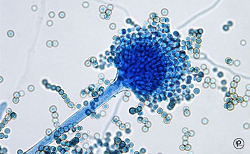Description: A large family of techniques to achieve super-resolution imaging utilize single molecule switching and localization microscopy. In these techniques, such as STORM, PALM, FPALM, and GSDIM, super-resolution is achieved by first switching all the molecules in the sample to a non-fluorescent state. Individual molecules are then returned to the fluorescent state, imaged, and their position determined to much higher than the diffraction limit. This lecture describes these techniques, dye requirements (photoswitchable fluorescent proteins and small molecule dyes) and how to extend these techniques to 3 dimensional imaging.
About the Speaker: Bo Huang
Dr. Huang’s research focuses on using super-resolution microscopy and single-molecule imaging to understand how proteins form large complexes and how proteins interact to regulate signaling. Huang is an Assistant Professor in Pharmaceutical Chemistry and in Biochemistry and Biophysics at UC San Francisco.
For full tutorial and assessment go to iBiology
Medical and Patient education videos
-
Title
Description
-

Dr. Rohini Manuel, Consultant Clinical Microbiologist, Public Health England, London
-

Shila Seaton, Bacteriology Scheme Manager, UK NEQAS for Microbiology, Public Health England
-

Dr. P. Lewis White, Principal Clinical Scientist, Public Health Wales Microbiology, Cardiff
-

Prof. Dr. Clemens Decristoforo, Radiopharmacist, Univ.Klinik f.Nuklearmedizin, Innsbruck, Austria
-

Dr. Martin Hoenigl, Infectious Diseases and Tropical Medicine, Medical University of Graz, Austria
-

Dr. Jonathan Lambourne, Consultant in Infectious Diseases, Barts Health NHS Trust, London
-

Dr. Inês Ushiro-Lumb, Lead Clinical Microbiologist for Organ Donation and Transplantation, NHS Blood and Transplant, London
-

Dr. Mike Bromley, Lecturer, Institute of Inflammation and Repair, University of Manchester
-

Dr. Sharleen Braham, Clinical Scientist, King’s College Hospital, London
-

Dr. Duncan Wilson, Research Fellow, Aberdeen Fungal Group, University of Aberdeen
